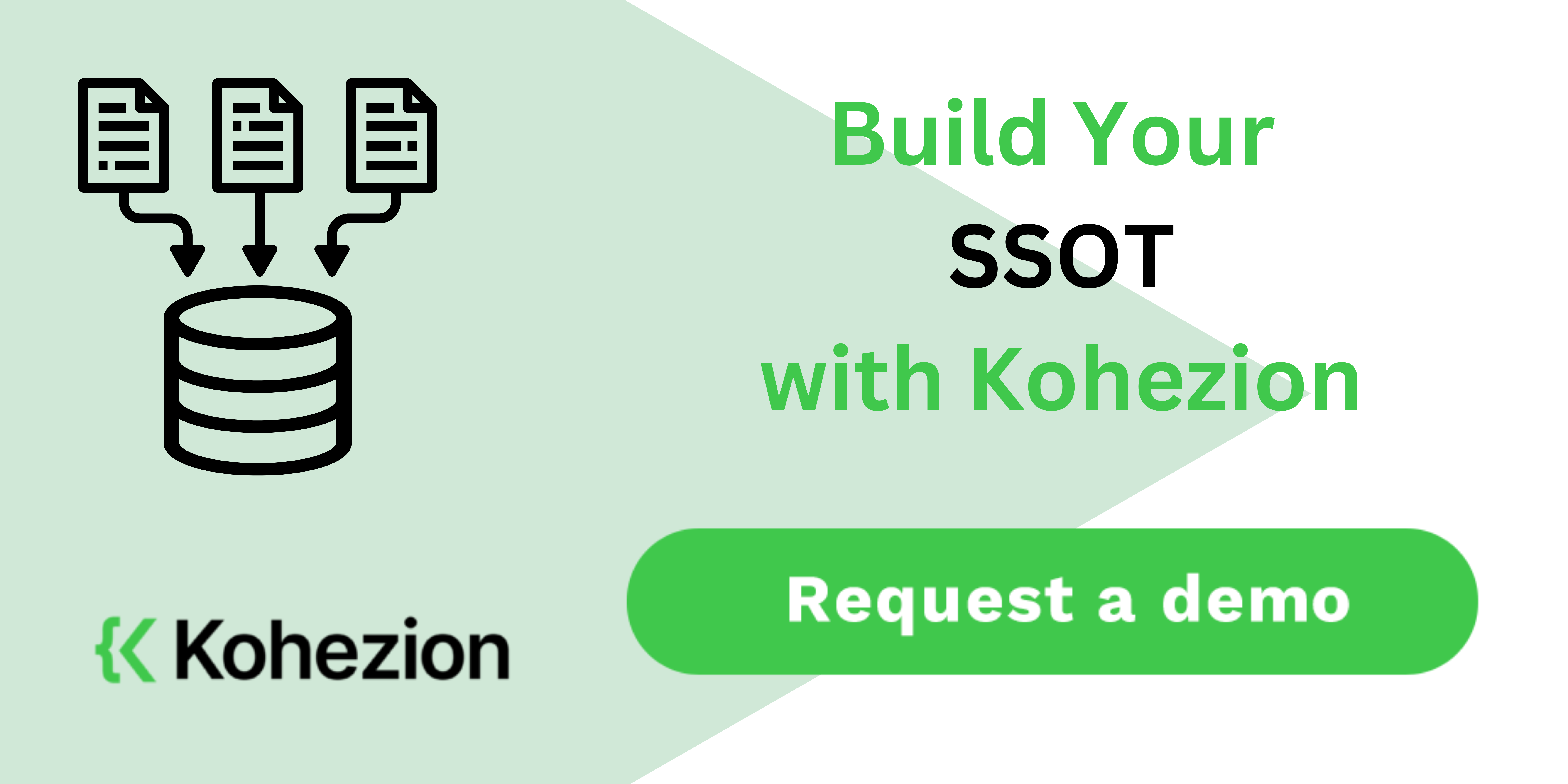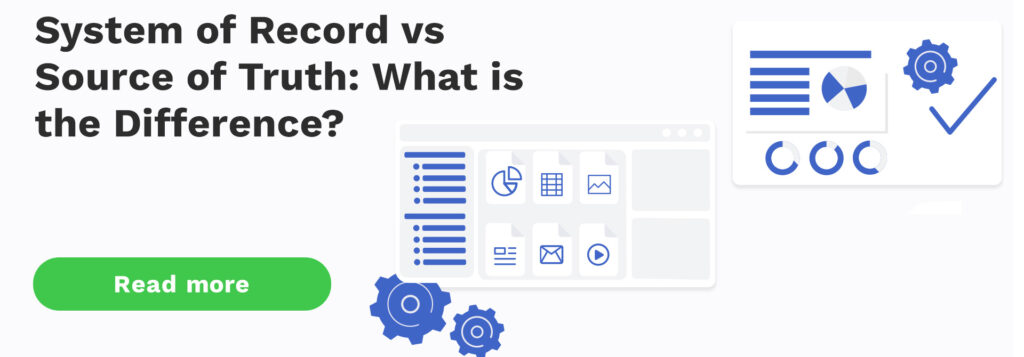SSOT embodies a centralized repository orchestrating seamless data flow across divergent platforms, ensuring a singular, accurate, and unified perspective amidst the complexities of business data. The crux of SSOT's significance resides in its fundamental role as the authoritative source, unifying disparate data silos into a singular, coherent narrative. It serves as the conduit for authenticity, reliability, and consistency within an organization's data ecosystem.
What Is a Single Source of Truth?
A Single Source of Truth (SSOT) is a principle employed in data management, which posits that all crucial business data should be stored and referenced from one place - a central authoritative hub. The SSOT acts as a database providing consistent and accurate data across the organization ensuring everyone's on the same page. Picture it like an all-wheel-drive vehicle, where a central computer maintains control, adjusting and distributing power to the wheels as needed. Similarly, an SSOT adjusts and disseminates relevant data to different departments within an organization. It offers a myriad of advantages such as enhancing productivity, reducing errors, and preventing any duplicate records. In essence, an SSOT is key to robust data management playing a huge role in bolstering operational efficiency and alignment within an organization.
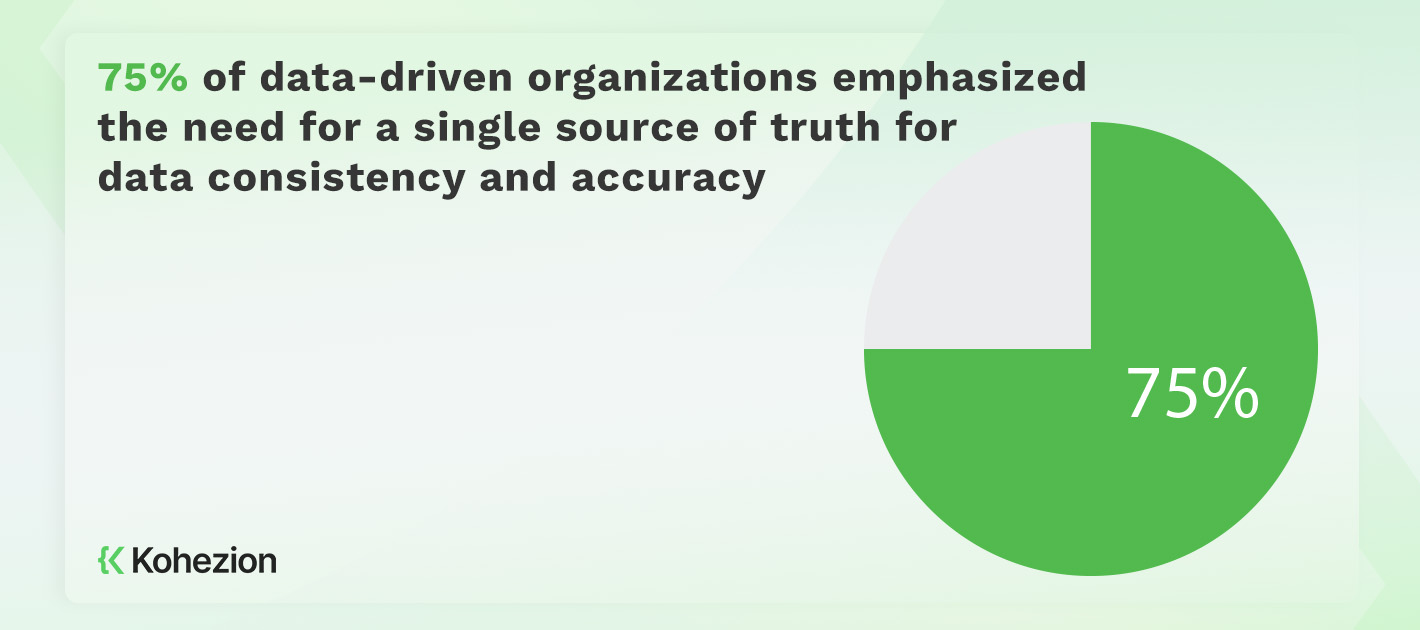
Does Your Business Need SSOT?
Navigating the decision of whether your business truly needs a Single Source of Truth (SSOT) can feel daunting. However, deploying an SSOT is crucial, not for every business, but for many, and especially those dealing with vital data spread across multiple systems.

Primarily, the SSOT offers a consolidated, and more importantly, a reliable platform housing all essential facts about your business. Not all businesses might need this, but let's have a look at certain scenarios where establishing an SSOT could potentially be a game-changer:
- Your business manages multiple systems housing overlapping data;
- There are recurring discrepancies within your data;
- You face difficulties in accessing or sharing data effectively;
- Your current state of data governance is challenging to maintain.
These indicators suggest that an SSOT might be the much-needed solution for your business. It aligns your data, offers clarity, and ultimately, reinforces decision-making.
Before arriving at a decision, assess your business needs critically. Here are a few guiding questions to aid your thought process: Is your data dispersed and inconsistent? Does your team struggle with data accessibility? Is your data governance weak? If it's a yes for these, then the implementation of an SSOT is definitely worth considering.
Your goal is to create an environment where your data acts as an empirical source, enhancing insights for improved business operations. With an SSOT, you've got a foundation supporting a cohesive, efficient, and truthful version of your data-driven activities.
Benefits of Having a Single Source of Truth
Single Source of Truth (SSOT) strategies significantly transform the way organizations manage information. In this section, we will unpack some notable advantages of introducing an SSOT system into your organization. The promise of eliminating duplicate data, faster data retrieval, better transparency, and more consistent information are just a few reasons why companies are increasingly aligning their data strategy with the SSOT philosophy.
Eliminate duplicate entries of data
Duplicate data entries present a challenge for organizations, often leading to discrepancies, inaccuracies, and confusion. These duplicates may arise due to manual data entry errors or when data is gathered from disparate systems. This not only wastes valuable resources in storage and data management but could also lead to misguided decisions based on inconsistent information.
Addressing this, a Single Source of Truth (SSOT) serves as a central data repository, ensuring that there is only one up-to-date and accurate version of every piece of information. An SSOT prevents data duplication and optimizes storage resources. It also maintains consistency and accuracy in data, avoiding the confusion caused by multiple versions of the same datum. The elimination of duplicate data entries promotes better decision-making, saves resources, and improves data quality for businesses.
Get the right data at the right time
In the absence of having the right data at the right time, businesses face significant setbacks. Experiencing delays in decision-making, inaccurate analysis, and even missed opportunities are some of the real issues at play. This is where a Single Source of Truth (SSOT) steps in to bridge the gap and bring in solutions.
With a robust SSOT, companies can centralize their data in a single point, ensuring it is up-to-date and can be accessed in real-time. This in turn eliminates the confusion and mismatch often experienced with data from different sources. It poses a key advantage for all stakeholders who are then equipped with the most current and accurate information. This data availability optimizes the decision-making process, providing the leadership with timely and strategic insights to maximize opportunities and mitigate risks.
Reduce the time identifying correct data
Correctly identifying product data from a myriad of sources can be a stumbling block due to the risk of inaccuracies and outdated data. Time-consuming verification processes, potential errors, and the lack of real-time data related to products are common issues, which can potentially lead to decisions based on flawed information.
An SSOT acts as a robust, reliable, and authoritative data hub that eradicates these hurdles. When data is centralized in an SSOT, users gain swift and easy access to accurate and current information, substantially diminishing the time spent on data validation. As a result, decision-makers are equipped with the right information at the right time, enhancing productivity and decision-making efficiency.
Improve the data intelligence capabilities
Organizations often grapple with various challenges in leveraging their data for effective business intelligence and analytics. These hurdles can consist of integrating data from multiple sources, ensuring consistency and accuracy, and making informed decisions based on the available data. A lack of standardization and the existence of multiple versions of the same data further complicate the issue, leading to distrust and confusion.
As a centralized and reliable data repository, an SSOT addresses these challenges head-on. It eliminates duplicate entries, reduces confusion among data sets, and provides decision-makers with accurate data promptly. This ease of data access, combined with improved accuracy, results in an iterative improvement in the organization's data intelligence capabilities.
Break down data silos
In a business setting, data silos pose a significant challenge. These silos form when data is stored in separate databases or systems, causing fragmentation, duplication, and inconsistencies across departments. This can hamper the flow of information, resulting in inefficient operations and decision-making based on inaccurate data.
An SSOT creates a central repository and integrates and homogenizes data, ensuring access is universal across all teams. The SSOT replaces fragmented data silos with a unified platform and eliminates redundancy, ensuring consistent and accurate data. This way, the Single Source of Truth removes the barriers presented by data silos, facilitating smoother business operations.
Support new strategies with data
An SSOT serves as a central repository for consistent and trustworthy data, allowing organizations to access necessary data whenever required. With a comprehensive view of accurate data, decision-makers can meticulously evaluate the success of current strategies and identify areas for improvement.
The implementation of SSOT also provides the opportunity to develop new strategies based on verified data, facilitating the generation of innovative ideas supported by factual evidence. This significantly increases the likelihood of strategic success and gives businesses a competitive edge. When your business aligns its strategy with SSOT principles, it can confidently innovate, knowing its conclusions rest on a reliable and accurate data foundation.
How to Build a Single Source of Truth Database?
Building a Single Source of Truth (SSOT) might not seem like a huge task, but the transformative impact it can have on your organization is significant.
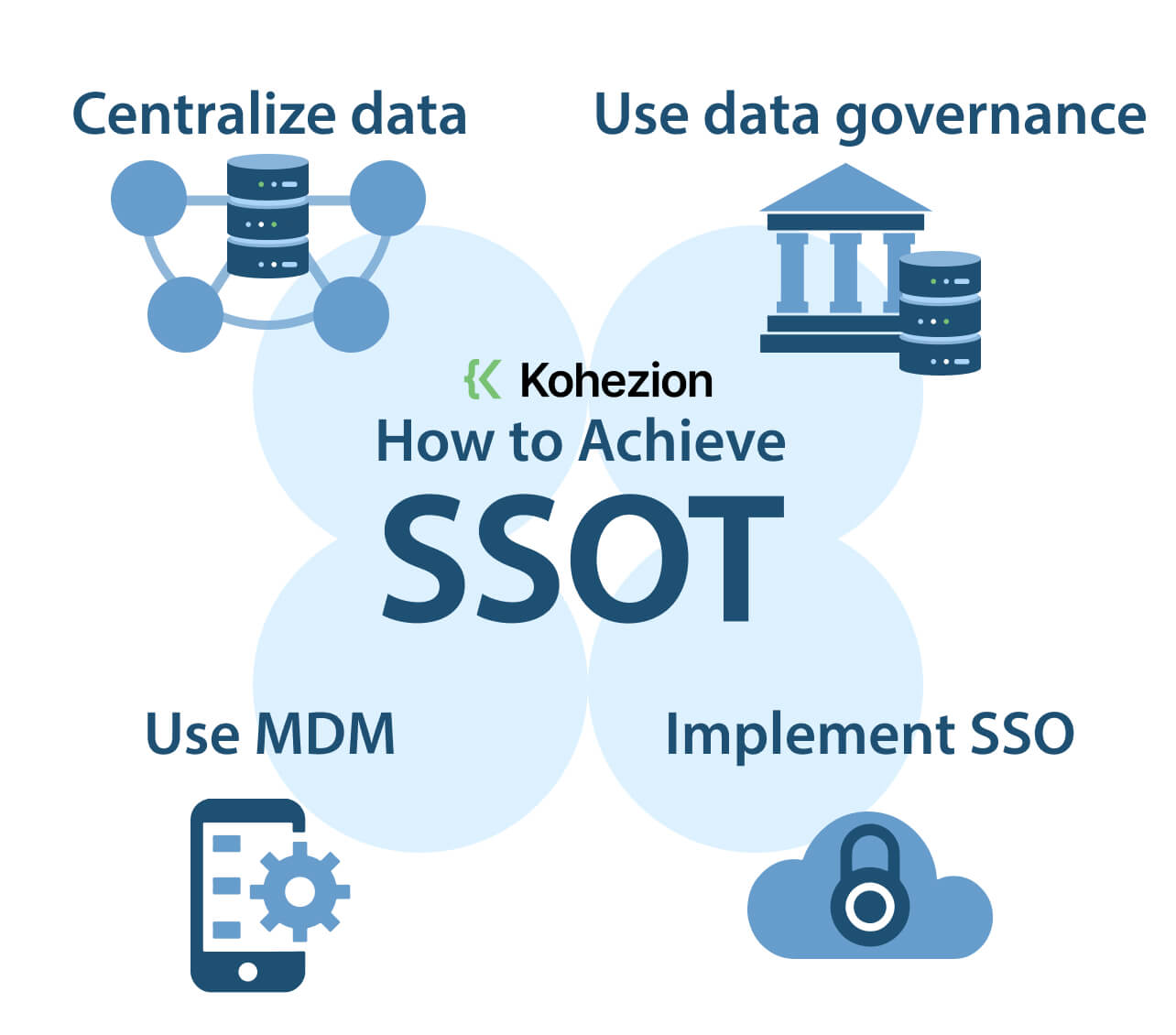
Identify the critical sources of data
Building a Single Source of Truth (SSOT) begins with the crucial step of identifying the critical sources of data. These are your key systems, databases, or applications that house the most important and often-utilized data for your business operations. This is an integral part of the process because, by defining these sources, you guarantee that the most important information is accessible and in one place.
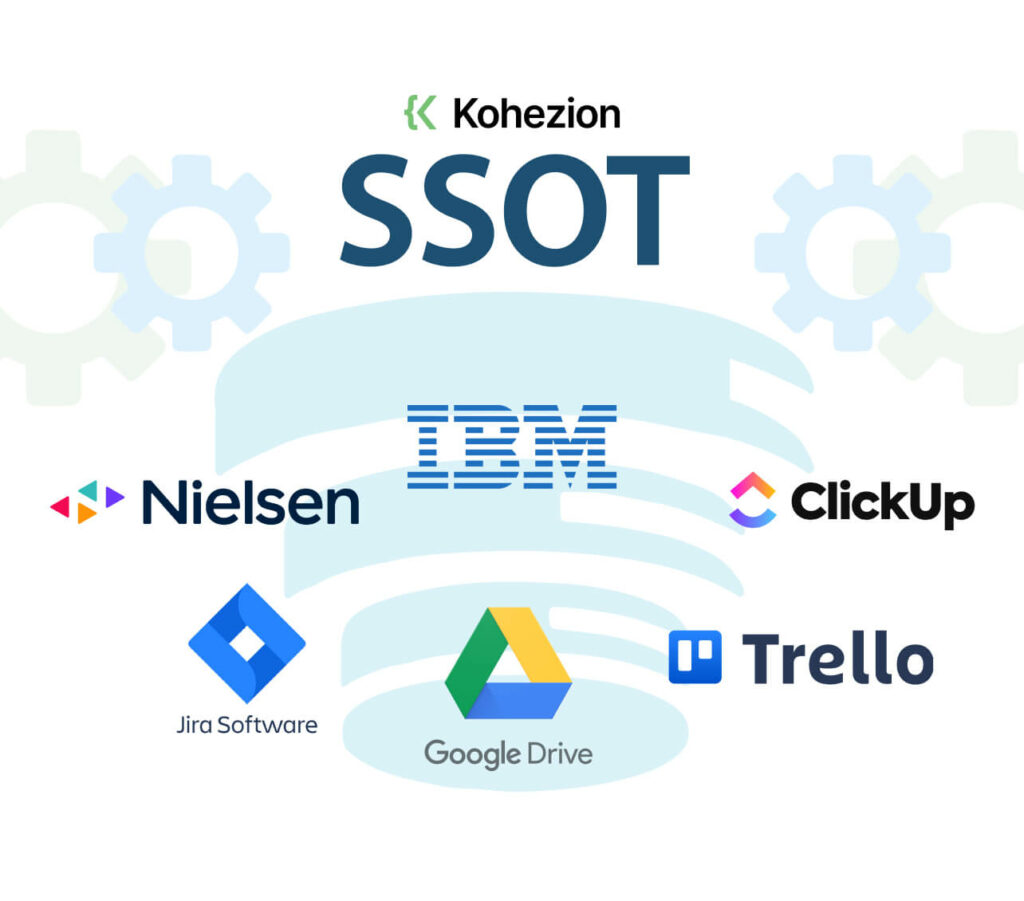
However, organizations often encounter hurdles like data fragmentation, redundancy, or inconsistent data structures. These challenges can lead to confusion, inefficiencies, and potential inaccuracies if not addressed properly.
Here are some actionable steps for identifying key data components and sources:
- Conduct a thorough data inventory or audit to understand what data you have and where it's stored.
- Consult with key stakeholders or subject matter experts who understand the importance of data for various business functionalities.
- Prioritize data that is most essential for achieving organizational goals and objectives.
Establish clear ownership
Ownership assigns responsibility and accountability for the governance, maintenance, and integrity of the SSOT and its associated data to a designated individual or team. Without clear ownership, issues such as data inconsistencies and integrity loss may arise, leading to confusion and potential chaos in decision-making processes.
To ensure clear ownership when building an SSOT, consider these guidelines:
- Appoint a dedicated team or individual with the requisite skill set to manage the SSOT.
- Define roles and responsibilities clearly to avoid ambiguity.
- Establish protocols for data maintenance and updates, ensuring that everyone involved knows their duty to preserve the SSOT's integrity.
Choose the right technology
Choosing the right technology forms the backbone of building a Single Source of Truth (SSOT) as it ensures seamless integration, scalability, and data accessibility for all teams.
To circumvent these challenges, there are a few actionable steps you can take:
- Conduct an exhaustive assessment of your organization's current technology infrastructure and its requirements. This will help you understand the technological groundwork you need to cover.
- Evaluate various SSOT solutions to identify which serves your unique needs best. Your chosen solution should not only be user-friendly but also compatible with existing systems.
- Consider data security. Your chosen technology should support robust protection against potential data breaches.
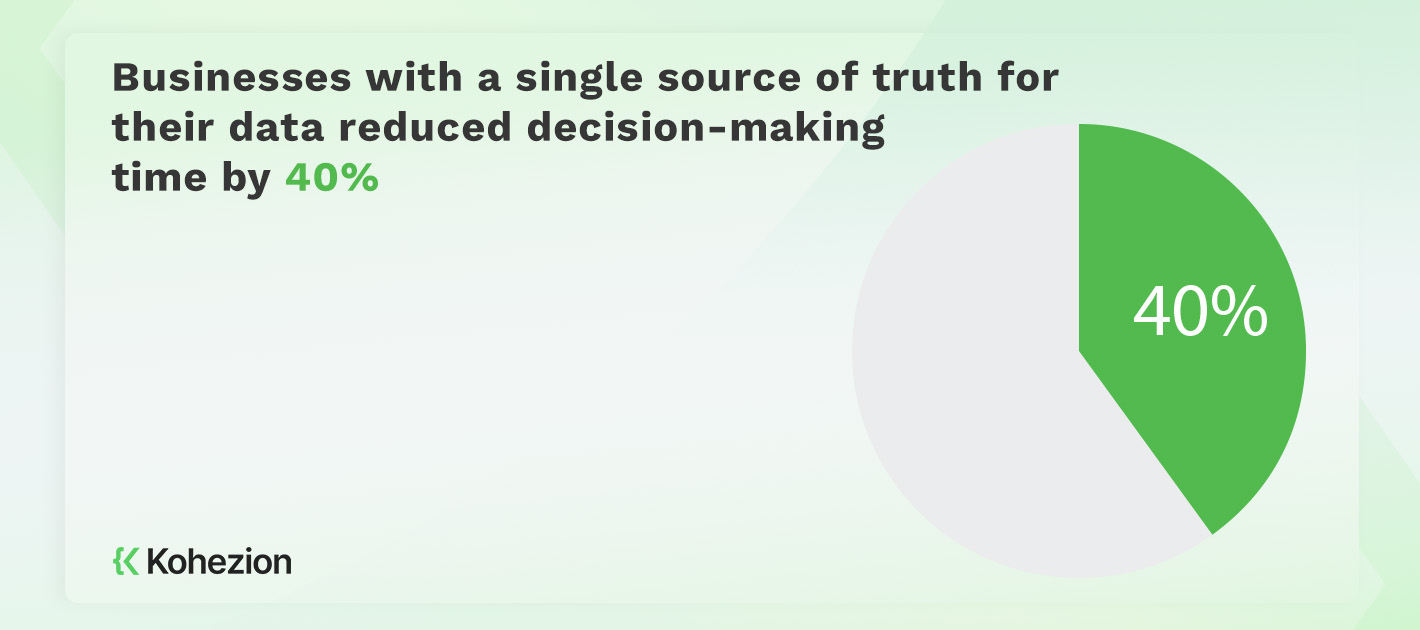
Implement robust data validation processes
Building a Single Source of Truth (SSOT) warrants the implementation of robust data validation processes. Scrutinizing your data at the initial stages helps identify and amend errors, inconsistencies, or discrepancies before feeding it into your SSOT. Why so? Because invalid data can lead to incorrect data analysis, compromised decision-making, and a loss of confidence in the dependability of the SSOT.
To avoid these potential pitfalls, follow these steps:
- Define data validation rules and standards: These benchmarks act as your data quality firewall, ensuring only data that meets set guidelines make their way into your SSOT.
- Employ data profiling and cleansing techniques: These processes help you understand your data's structure, relationships, and anomalies.
- Conduct regular data audits: This ongoing process identifies and corrects discrepancies over time and helps you maintain the accuracy and reliability of your SSOT.
- Involve subject matter experts or data stewards in the validation process: These individuals bring in-depth knowledge about the data, ensuring it is suitable for use in your SSOT.
Communicate and educate
Clear and consistent communication within your organization creates awareness of the purpose and benefits of implementing an SSOT and informs stakeholders about the plan. Without effective communication, you may face challenges such as resistance to change or limited engagement with the SSOT due to misinformation or misunderstanding.
Here are some actionable steps for effective communication and education when building an SSOT:
- Develop a communication strategy outlining key messages about the SSOT and the value it adds to the organization.
- Conduct regular training sessions or workshops educating employees on how to use the SSOT.
- Provide ongoing support and resources to address questions or concerns from the staff.
Single Source of Truth Use cases
From world-renowned search engines such as Google to startups navigating highly competitive markets, the SSOT principle is implemented in diverse scenarios.
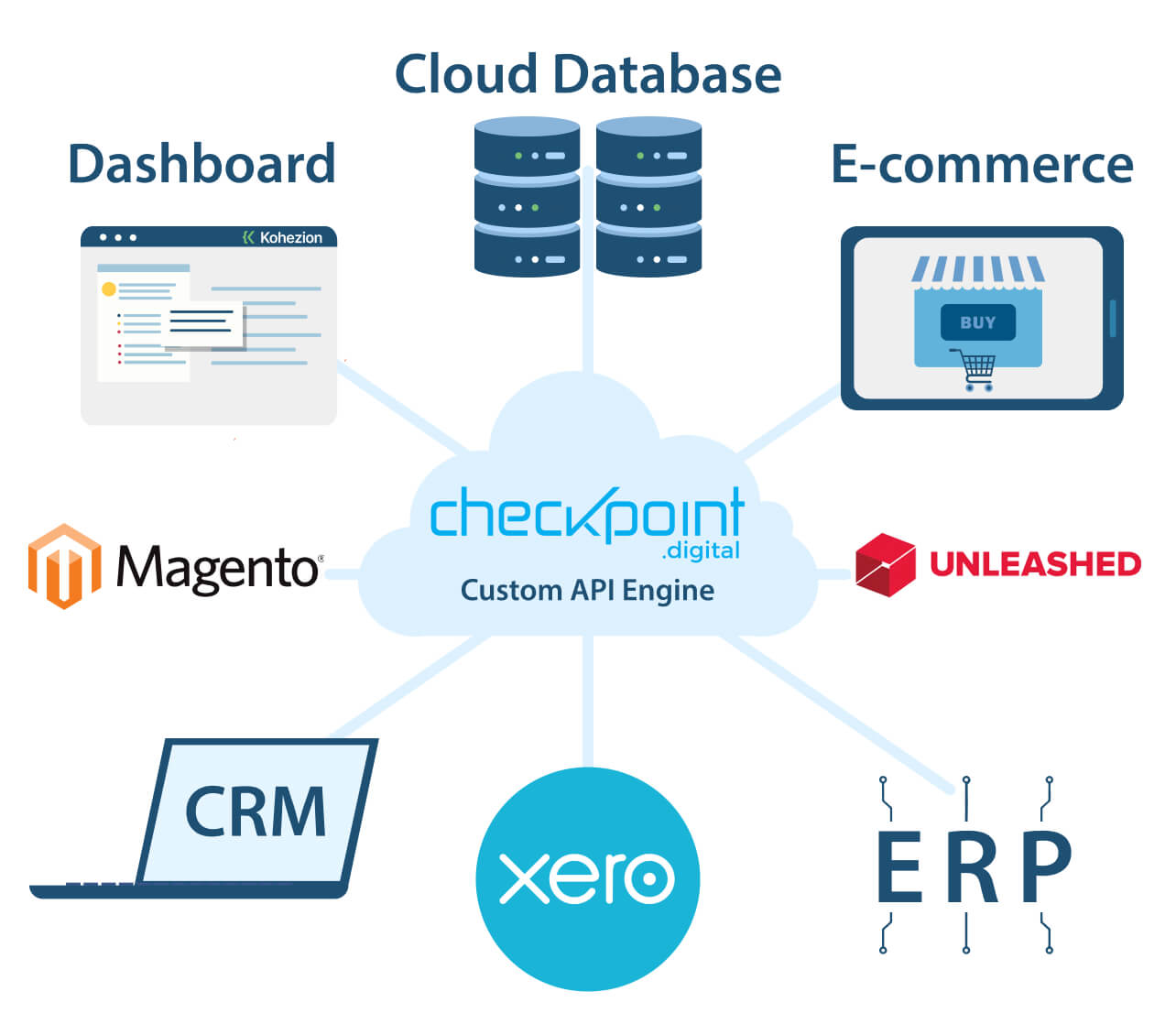
Regulatory Compliance
An SSOT can support regulatory compliance as it provides a detailed vista of customer data, which aligns with data privacy regulations. It can aid in monitoring and maintaining audit trails, reports, and documents required by regulatory bodies. This consolidates data under one source and assists organizations in navigating complex regulations such as HIPAA and GDPR.
Search Engines
In the digital context, a Single Source of Truth (SSOT) is a powerful tool used by search engines like Google to catalog and deliver highly accurate and reliable search results to users. An SSOT acts as a centralized and authoritative repository of data that these search engines can rely on, ensuring that the results presented to users are not just pertinent but backed by a single, validated source of data.
For example, consider the complex process of search engine indexing. To garner the best results, search engines need to sift through enormous amounts of content, verifying its relevance, quality, and credibility. What SSOT does is store this vast data in a singular, unified location, effectively enhancing the search engine's ability to deliver accurate results. This way, search engines avoid disseminating contradictory or obsolete data, establish user trust, and ultimately, improve the user search experience.
Software Development
A Single Source of Truth (SSOT) acts as a central hub for crucial development components such as code, documentation, and other developmental assets. This centralized repository ensures that every team member can access the most recent and verified information, eliminating the possibility of outdated or conflicting data.
The implementation of an SSOT in software development ushers in a plethora of benefits. Firstly, it enhances collaboration among team members as everyone refers to the same unified information source. Secondly, it bolsters version control and ensures that every team member is working on the latest code version. Lastly, it enforces consistency across different development environments, enhancing productivity and reducing discrepancies.
We'll buid your first application for you. At no extra cost.
Let us build your first business application for free. Go from an idea to an application in under 2 weeks.

Conclusion
With SSOT, you build a foundation that eradicates data duplications and enables access to reliable, accurate data when required. This, in turn, quickens data identification, enhances data intelligence capabilities, dismantles data silos, and lays the groundwork for devising new strategies supported by data.
SSOTs are not confined to particular sectors or industries, as demonstrated by use cases across regulatory compliance, search engines, and software development. In conclusion, take a moment to contemplate the numerous rewards and potential value an SSOT could introduce to your organization. With the right drawing up, execution, and lasting management, an SSOT can stand as the pillar of data integrity and accuracy, paving the way for a critical competitive edge.
Start building with a free account
Frequently Asked Questions
An SSOT, or Single Source of Truth, addresses the issue of redundant data by centralizing it. In implementing an SSOT, data updates or entries are streamlined within the central repository. This eliminates redundancy and reduces the chances of generating duplicate data sets or conflicting versions of the same information. Integral to a functioning SSOT is rigorous data validation processes, which help pinpoint and remove any duplicate or redundant data within the system, ensuring only the most accurate and distinct information forms part of the SSOT.
Yes, a Single Source of Truth (SSOT) can significantly enhance collaboration and transparency within an organization. It serves as a central repository that holds accurate, up-to-date data accessible to all relevant stakeholders. This accessibility eliminates data silos, ensuring everyone in the organization works from the same information stage.
An SSOT promotes dynamic collaboration, as it provides a common platform for teams to access and contribute to the same dataset. It enables seamless sharing of information across different departments while fostering efficient teamwork.
Transparency also increases significantly with an SSOT. It curtails the risk of data discrepancies or misinformation, thus building faith in the information shared across teams. With a reliable and singular version of the truth, individuals can rest assured about the accuracy and integrity of the data, leading to increased trust and transparency.
A Single Source of Truth (SSOT) is instrumental in regulatory compliance, ensuring adherence to the legal, industrial, or internal regulations and standards imposed on an organization.
The role it plays in regulatory compliance can be understood as a centralized and reliable repository of updated and accurate data. This data is easily accessible and auditable, shaping it as a key tool for regulatory oversight. Relevant data necessary for compliance, be it customer details or transaction records, is stored, organized, and managed in compliance with regulatory requirements, ensuring readiness for possible audits or inspections.
Take data privacy regulations like the GDPR, for instance. An SSOT system can provide a total view of customer data, greatly assisting in the management of data erasure or correction requests. Also, it ensures that data access controls are aligned with the privacy regulations and mitigates any risk of non-compliance.
